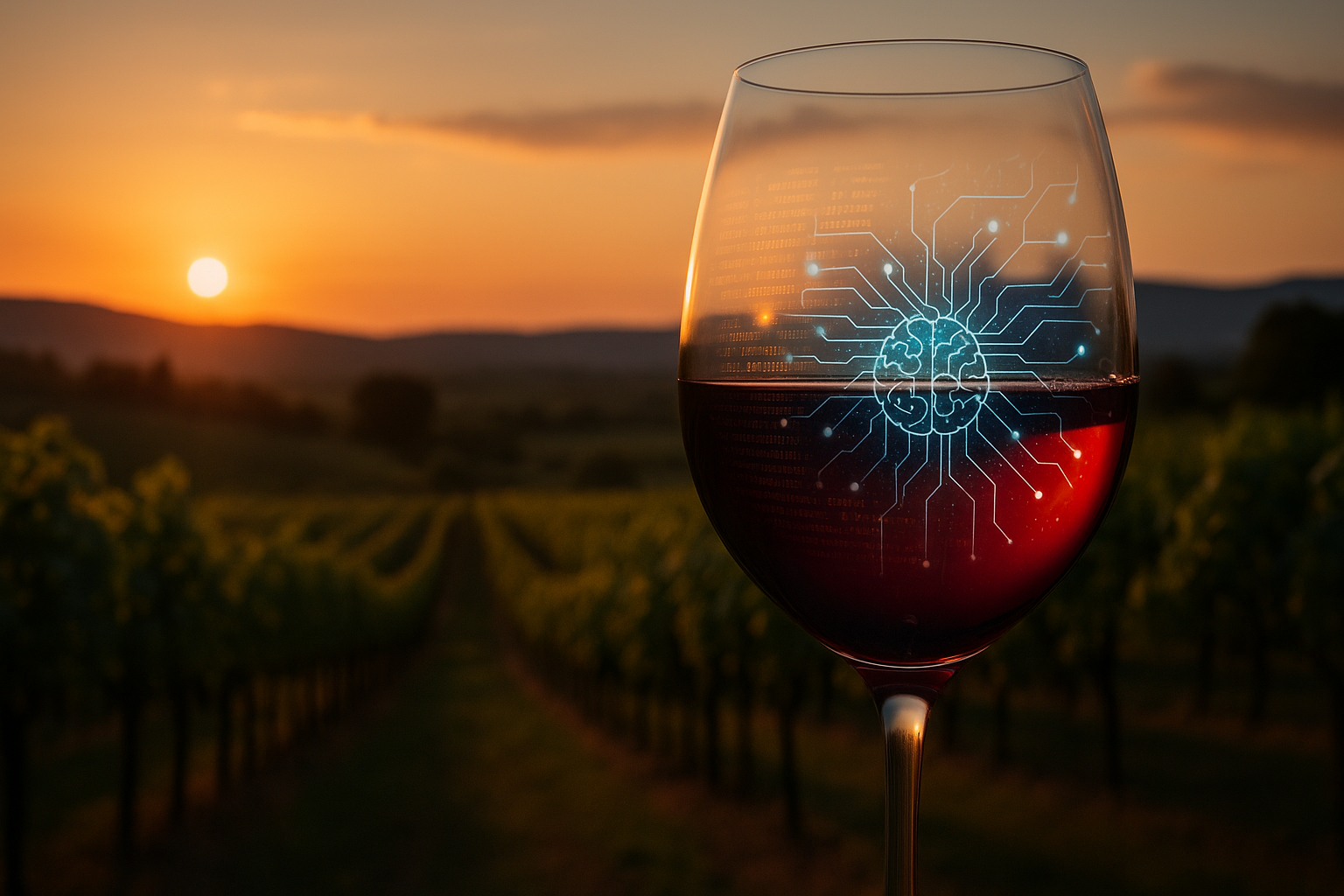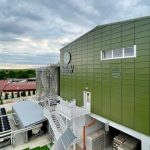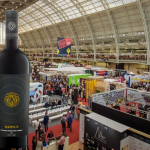- AI enters the vineyard, the cellar, and the glass – the beginning of the era of artificial intelligence in the wine industry
- Artificial Intelligence in the Wine Industry – Driving Optimization
- Precision Viticulture – When Drones and Sensors Become the Vineyard’s Eyes
- Can Winemaking Become an Algorithm?
- AI in the Glass as A Digital Sommelier
- In essence, the differences between the leading AI-driven platforms are:
- Branding and Storytelling – Wine as a Digital Product
- No matter how advanced it becomes, artificial intelligence in the wine industry cannot feel. It can analyze data on aroma, acidity, and tannins, but it cannot perceive the velvety texture of a mature Merlot or the mineral vibration of a terroir-driven Riesling. In essence, AI doesn’t taste — it calculates.
- Conclusion – Witnessing a New Revolution
Artificial intelligence in the wine industry is penetrating ever deeper — into the vineyard, the cellar, and even the glass. Digital sommeliers, augmented reality, computer-guided drones, AI-recommended blends… Not long ago, one of the classic hiring tests was to sell someone a pencil. During the pandemic, the magic words were “free delivery.” Today, the phrase that seems to sell everything is “made with AI.”
How far – and how deep – will Artificial Intelligence reach into the world of wine?
For something that has existed for such a short time, AI has already dug surprisingly deep roots – from vineyard to winery, to labels, brands, and recommendation apps. And yet, we keep saying that wine is emotion, experience, story. So where is this headed? It’s too early for verdicts, but one thing is certain: we’ll live to see some interesting times.
AI enters the vineyard, the cellar, and the glass – the beginning of the era of artificial intelligence in the wine industry
Until recently, the idea that an algorithm could “understand” wine would have sounded absurd.
Wine is, by nature, a human craft – the result of hundreds of fine decisions made by people who understand soil, climate, and time. Yet in less than a decade, Artificial Intelligence has entered one of the world’s most traditional industries, reshaping the way we grow, produce, promote, and even choose wine.
This transformation was never about replacing the winemaker. It was about precision, adaptation, and sustainability. Climate change has made seasons unpredictable, pests harder to control, and resources such as water, energy, and labor increasingly scarce. In this context, algorithms and sensors are no longer seen as rivals but as assistants.
Artificial Intelligence in the Wine Industry – Driving Optimization
Artificial intelligence in the vineyard or winery is no longer an abstraction. It is a network of multispectral cameras, drones, machine learning models, and climate databases that, combined, can anticipate weather patterns, detect soil deficiencies, and suggest the optimal harvest moment. In laboratories, artificial intelligence in the wine industry analyzes the chemical composition of wines, adjusting fermentation parameters to ensure consistent quality across vintages.
But perhaps the most visible change is at the other end of the chain – the consumer. Today, AI-powered apps can recommend the ideal wine for dinner, learn a user’s preferences, and predict which bottle they are most likely to enjoy. Part of the beauty of wine has always been discovery – but now, discovery itself is becoming data-assisted.
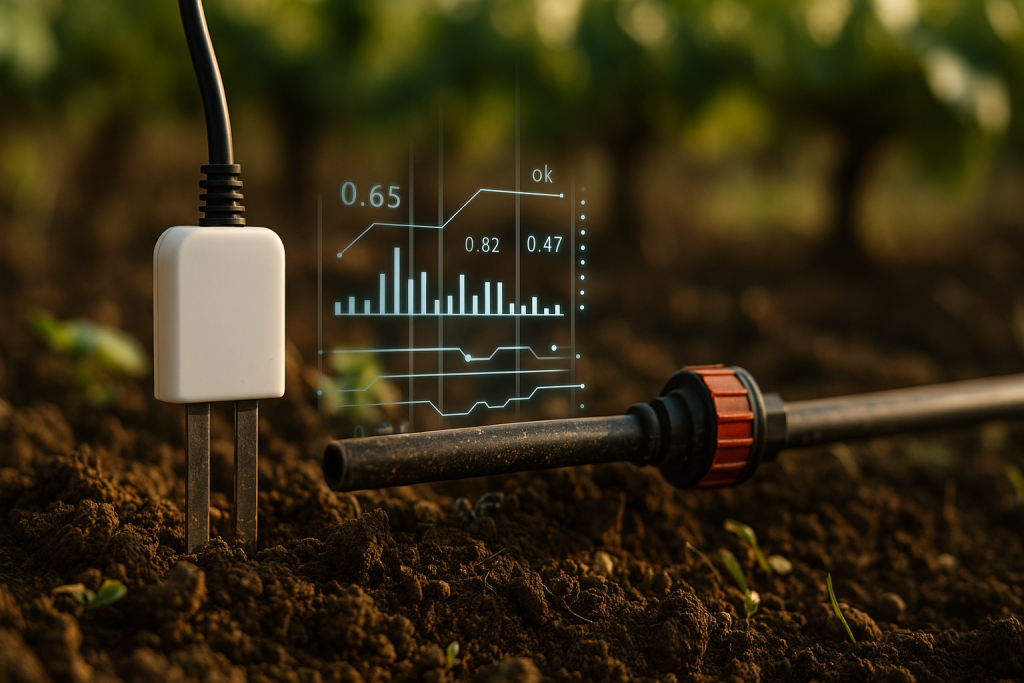
Precision Viticulture – When Drones and Sensors Become the Vineyard’s Eyes
In vineyards around the world, drones, multispectral cameras, and soil sensors already provide growers with a detailed image of every row of vines, enabling precise and efficient interventions.
In Portugal, Symington Family Estates has used drones for years to analyze plant vigor through the NDVI index, identifying areas of imbalance early on. In California, Williams Selyem Winery employs predictive models to anticipate water stress and adjust irrigation before the vines show visible signs of strain.
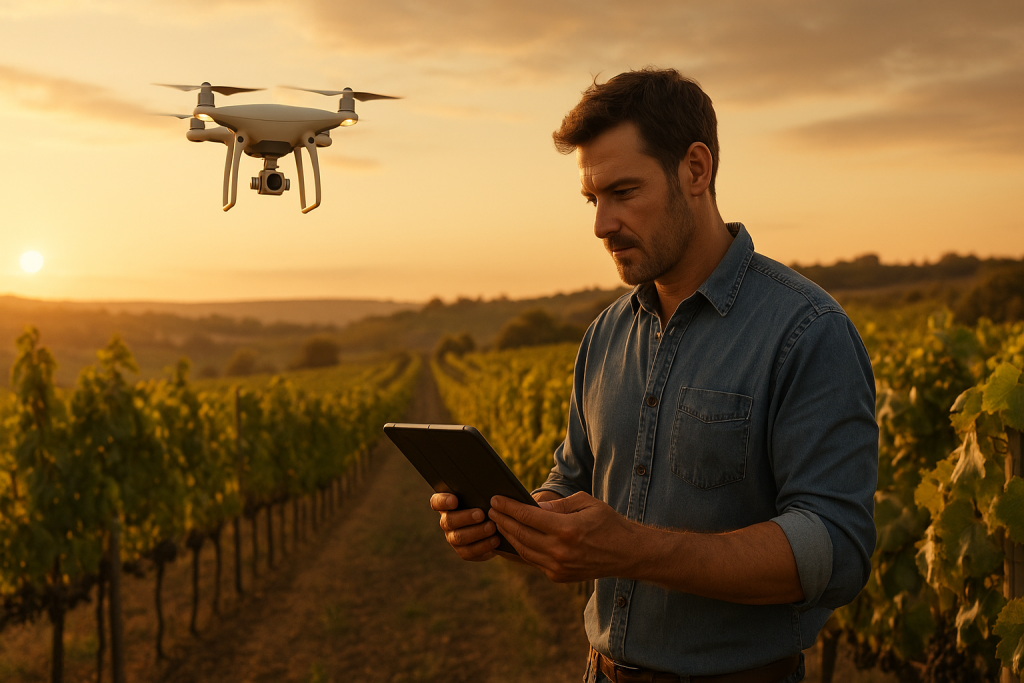
Closer to home, the Chelaris AI Wine project by Wines of Moldova takes things further: AI not only helps design the final blend but also supports decisions in the vineyard – analyzing climate, soil, and humidity data to determine the optimal harvest time.
Rezultatul acestei „viticulturi de precizie” este o utilizare mai sustenabilă a resurselor și o calitate constantă a strugurilor, chiar în condiții climatice dificile. Totuși, tehnologia nu înlocuiește experiența: inteligența artificială în industria vinului oferă date, dar interpretarea rămâne umană. Viticultorul decide, algoritmul doar arată direcția.
Can Winemaking Become an Algorithm?
Artificial intelligence in the wine industry is becoming an increasingly trusted partner for winemakers. Sensors continuously monitor fermentation, while machine learning models analyze temperature, acidity, and aromatic compounds to anticipate the wine’s evolution.
In Chile, Concha y Toro uses AI to track fermentation and predict the final profile, optimizing key decisions in real time. In the Republic of Moldova, the Chelaris AI Wine project goes even further: algorithms process climatic and sensory data to suggest the ideal proportions between local grape varieties, while human winemakers validate the results.
A notable commercial example comes from the United Kingdom, where Sainsbury’s launched its CTZN Wines range – blends created with the help of GPT-based analysis of market trends and taste preferences. The outcome? Well-made, easy-drinking wines built around a futuristic concept, though the Elizabeth & Wine review by Elizabeth Hawthornthwaite rated them a moderate 3 out of 5 for taste.
For now, AI doesn’t replace the winemaker – it supports them. Data brings predictability and consistency, but the path toward balance and emotion remains human territory. And it’s worth remembering: it’s only been a few short years since this technology became truly accessible.
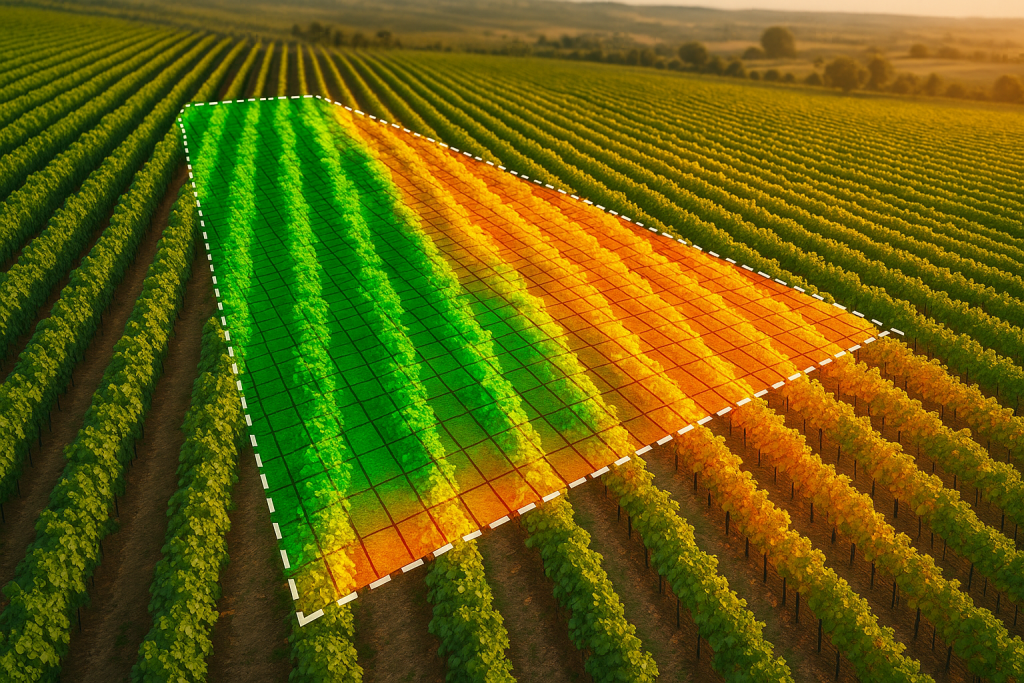
AI in the Glass as A Digital Sommelier
Artificial Intelligence has also found – or is trying to find – its way into the consumer’s glass. A new generation of mobile applications promises to turn your phone into a digital sommelier, capable of recommending the right wine for every taste, budget, or occasion.
Apps such as WineGPT, WineAI, and Somme personalize the wine-selection experience. WineGPT uses conversational models to respond much like a real sommelier would; WineAI matches wines with dishes and recipes; while Somme learns the user’s taste profile through a form of gustatory machine learning.
For professionals, platforms like Aivin and Preferabli take AI into the retail and hospitality world, analyzing customer data and generating real-time recommendations. Meanwhile, CellarTracker – with over nine million wines in its database – helps collectors decide which bottles are ready to drink, while Decántalo and WineDB function as vast digital libraries for enthusiasts worldwide.
The main argument behind such apps is convenience: “so you don’t waste time scrolling your phone for pairings and details.” Given that most databases are still limited, a quick Google search might still be easier – for now. But once these apps learn your buying and drinking habits, things could change dramatically.
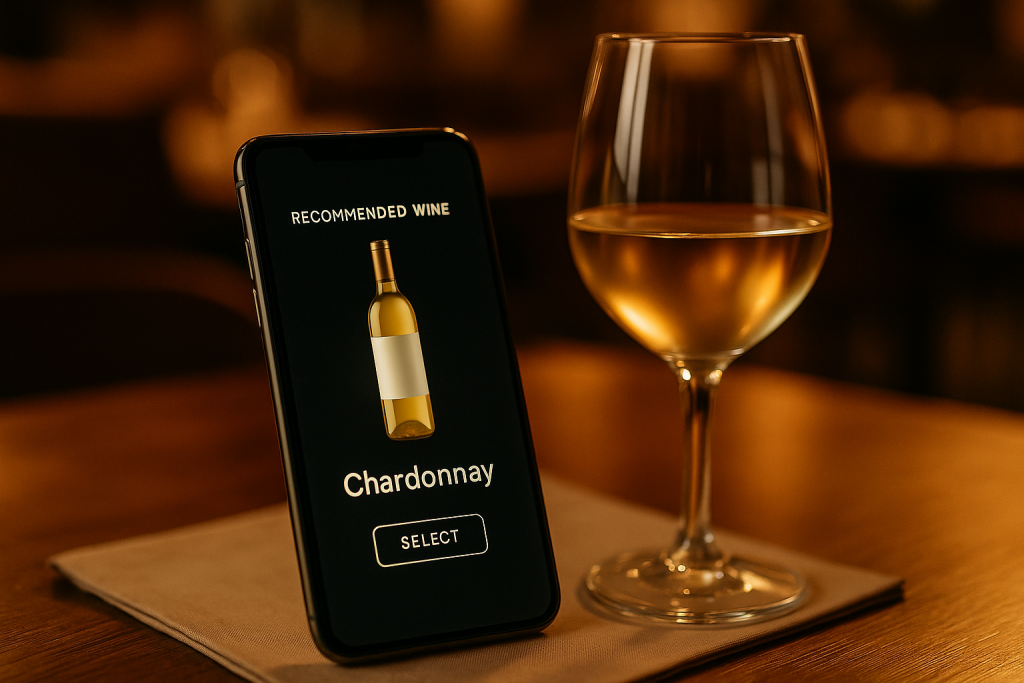
In essence, the differences between the leading AI-driven platforms are:
– WineGPT, Somme, and WineAI target individual users and focus on personal taste.
– Aivin, Preferabli, and Vivant also serve the B2B segment – restaurants, shops, and retailers.
– CellarTracker and Decántalo act as massive databases for professionals and collectors, while WineDB is still growing.
– Some rely on machine learning to model flavor profiles; others use conversational LLMs to create an experience that feels remarkably close to talking with a human sommelier.
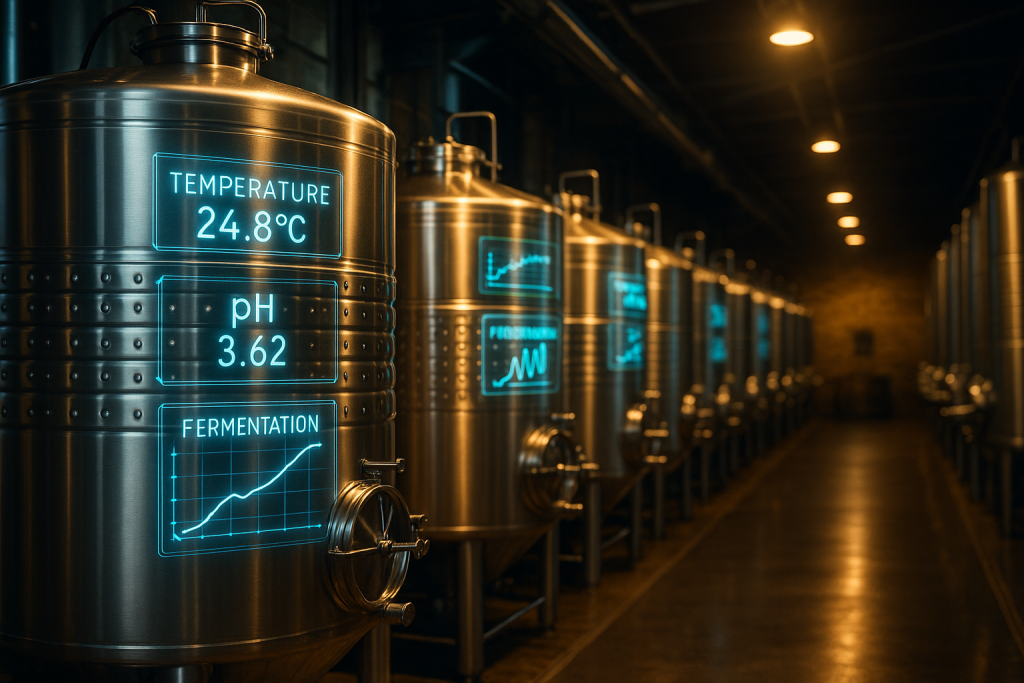
Branding and Storytelling – Wine as a Digital Product
For many young wineries, artificial intelligence has become both a copywriter and a digital designer — capable of generating label concepts, tasting descriptions, and promotional texts in multiple languages. Examples like CTZN Wines, launched by Sainsbury’s, show how far this collaboration between humans and algorithms can go. According to a report by Food & Drink Manufacturing, AI contributed to the creation of poetic names such as “Quantum Quintessence” and “Luminous Drift,” resulting in a coherent visual and narrative identity designed for the digital public.
An increasing number of brands now use language models to analyze online reviews and adjust their messaging to match the tone of their audience. AI can suggest colors, images, or even emotions suitable for a label, based on data from previous campaigns. For a global market, this means speed and consistency – a brand that can speak the same language in Tokyo, London, and Bucharest.
For emerging wineries, AI can act as a copywriter capable of writing persuasive descriptions in twenty languages. Yet one of the most powerful selling points of wine – at least for Generations X and Y, as well as part of the millennial audience – is the story. And a story can’t be fabricated, nor told better than by those who have truly lived it.
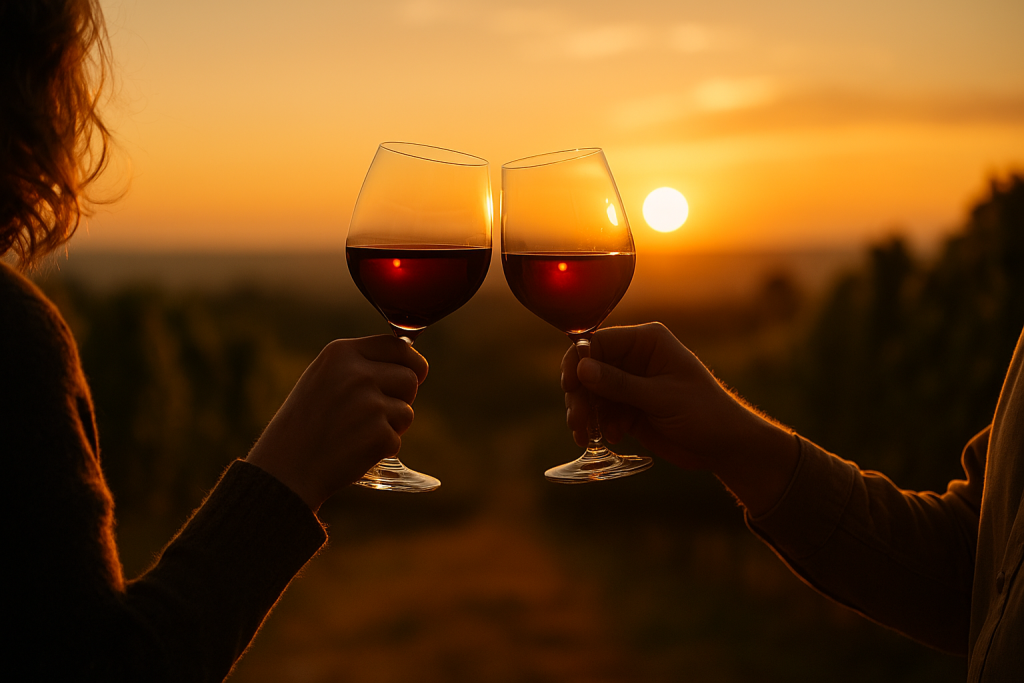
No matter how advanced it becomes, artificial intelligence in the wine industry cannot feel. It can analyze data on aroma, acidity, and tannins, but it cannot perceive the velvety texture of a mature Merlot or the mineral vibration of a terroir-driven Riesling. In essence, AI doesn’t taste — it calculates.
No matter how advanced it becomes, artificial intelligence in the wine industry cannot feel. It can analyze data on aroma, acidity, and tannins, but it cannot perceive the velvety texture of a mature Merlot or the mineral vibration of a terroir-driven Riesling. In essence, AI doesn’t taste — it calculates.
British philosopher Barry C. Smith, in an essay for The World of Fine Wine, noted that “the experience of wine cannot be reduced to data.” Tasting is a synthesis of senses, memory, culture, and emotion – dimensions no neural network can replicate. Language models can describe a wine with flawless precision, but they cannot convey the warmth of a glass shared at sunset or the joy of opening a bottle among friends.
In the vineyard and the cellar, AI can optimize decisions. In marketing, it can tell stories. In apps, it can learn preferences.
But the deep understanding of wine – the connection between human, place, and time – remains an act of humanity.
It’s precisely this subjective, imperfect side that makes wine so special: two people can taste the same bottle and live entirely different experiences.
Conclusion – Witnessing a New Revolution
Artificial Intelligence is not here to replace winemakers, but to complement them. In the vineyard, drones and sensors bring precision and prediction. In the cellar, algorithms help understand fermentation and build wines that are more stable, sustainable, and consistent. In marketing, AI writes text, designs labels, and shapes stories. And in restaurants or apps, it guides consumers toward wines that match their taste.
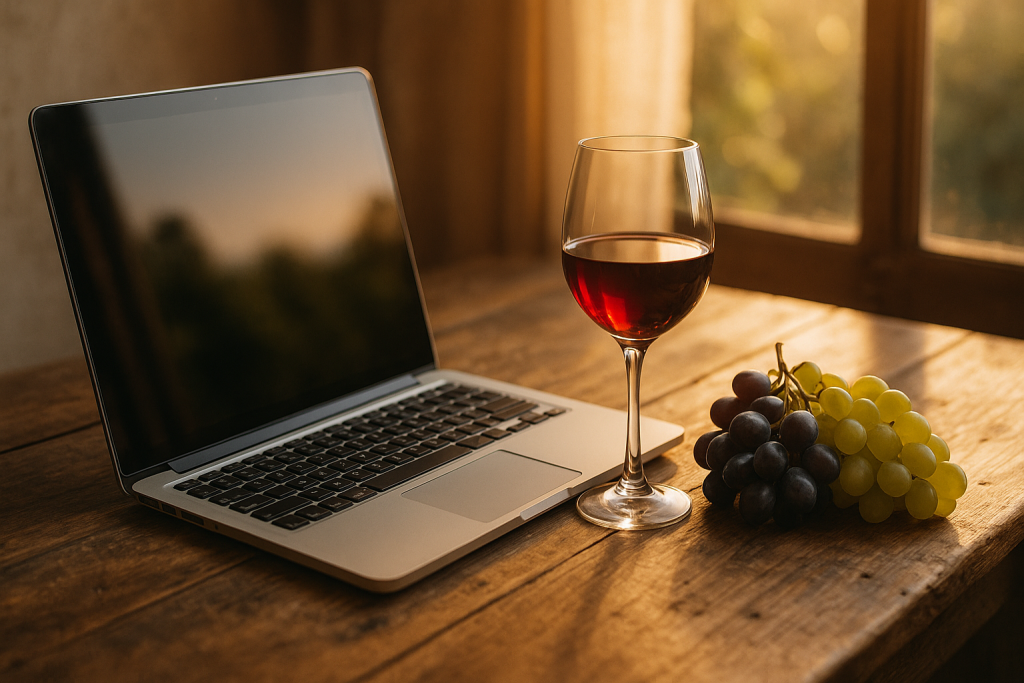
Together, these layers – earth, human, and data – form a new kind of terroir: digital, invisible, but increasingly influential. AI doesn’t change the essence of wine, only the way we discover it. It can make the process cleaner, more efficient, and better informed, but wine remains, above all, a sensory and emotional experience.
We still have to wait for the first wine made entirely by AI — from vineyard decisions to cellar choices, branding, and labeling, including delivery and presentation. Only then will we truly know whether the future belongs to artificial intelligence in the wine industry.
Until then, the future of wine does not seem to be one dominated by machines, but by a new harmony between tradition and technology. After all, we’ve had a technological revolution pretty recently – and it turned out rather well.
